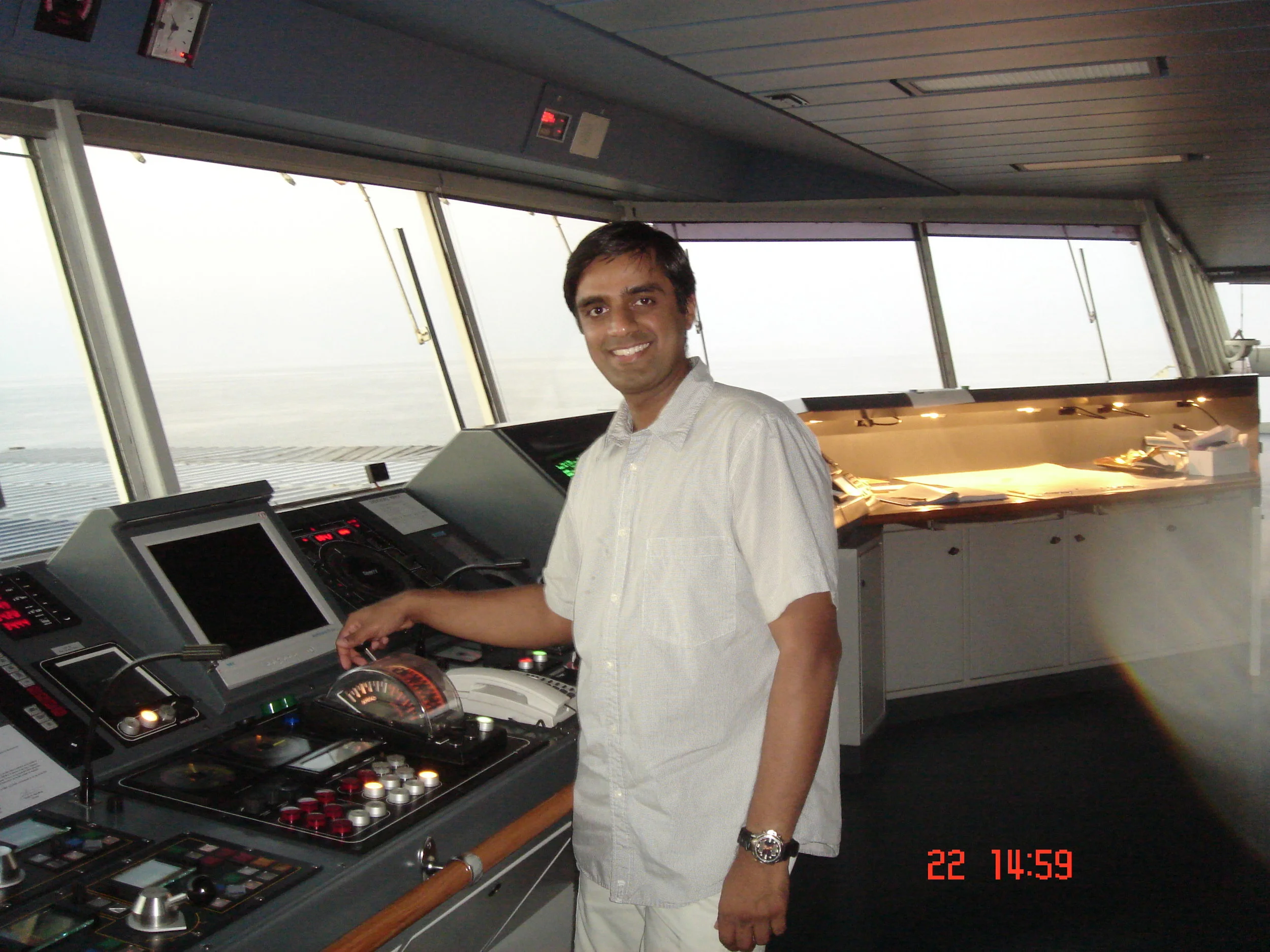Iceberg ahead! Human behaviour and the art of giving feedback
Vivek Menon, Head of Department in SEA HEALTH & WELFARE
Observing people’s behaviour is in many ways like observing an iceberg. You only get to see the tip of people’s feelings, thoughts and motives. The rest is hidden. Mastering the skill of feedback and feedforward paves the way for better insights into the behaviour of a team. A skill that is highly important to build trust culture in the workplace.
by Vivek Menon, Head of Department
When I was sailing as a navigator, I wrote the deck logbook in a way I was taught years before. During a sailing, the chief officer would daily during change-of-watch comment on my work in the deck logbook. It was a way of commenting that made me feel that she didn’t agree on how I did it, yet it was not really clear to me what the issue was. As it continued over time, my younger version of me began to challenge the chief officer’s daily comments. At first, it created some frictions between the two of us. But eventually, the discussions turned into a more constructive dialogue in which we both realised that none of us was right – or wrong. Instead, we found out that we had different educational backgrounds with equally different experiences on various ship types. It turned out that we were, in fact, both right in our procedures. We both had been used to certain kinds of logbook writing systems – unique to the ships we had worked on. This initial deck logbook-friction between the two of us became a foundation of our trust culture working forward.
People as icebergs
This example serves the purpose to illustrate that we people are like icebergs. When we observe or interact with people around us, we tend to make first impressions based on only 10 % of their behaviour. We make assumptions on what we can actually see and hear without really understanding a person’s ‘inside’ as in feelings, intentions and motives. It is like observing an iceberg where only 10 % of it is above the surface, and the rest is hidden under water. Getting to know a little more than 10% of the person in front of you requires time and effort what will eventually help build a trust culture on board. Just like it happened with the beforementioned chief officer and me. A good leader will make sure that he or she gets to know more than only 10 %. This is important because a trust culture makes work safer, more efficient and it provides a greater sense of well-being and fewer conflicts.
Feedback for a better understanding
Practicing feedback builds trust and has long been an essential element and - when constructive and honest - can be a gift for your team. There are a few things to remember when providing feedback to team members.
If you are dissatisfied with something, you need to intervene quickly. Do not wait for your annual or scheduled meeting.
Continuous feedback is key. Especially as a leader, it is important to repeat again and again what you expect for instance, that people must come to you when they are in doubt about a task.
Make sure you have an open body language and remember to acknowledge good examples when people come to you.
When giving feedback, it is natural for us to address both positive and negative observations. It is essential to describe the positive or negative observations, describe its effect and what you would like to see in the future. However, giving negative feedback can be a great challenge and may make both parties feel uncomfortable. It is natural that people do not like receiving criticism, especially if we as leaders do not fully understand the reasons for their behaviour (i.e. the remaining 90%). So, what can we do?
Vivek Menon when has was sailing as junior officer.
Feedforward - for a better future
Feedback is in some situations inadequate because it focuses on past behaviour. Instead, it is more fruitful to practice the concept of feedforward because here, the focus is on opportunities that exist in the future. Instead of looking back on what someone did, you look ahead on possible solutions. What you try and achieve with this method is to inspire a desirable behaviour going forward. And this is helpful as we people tend to feel more appreciated when the focus is on the future and self-improvement..
How to get started
Let us look at the beforementioned example again. In order to create trust rather than frictions, this is a way of starting:
What is the issue at stake? Let’s say that the chief officer observes something odd in the way that the junior officer writes the deck logbook. Chief officer should then take a meeting with the junior officer and in a curious manner asks about his or her history of sailing such as what type of ships and why deck logbooks were written this way.
Describe your goal for desirable future behaviour. Chief officer guides the junior officer through the procedures of writing deck logbook on this ship and why it is important to do it this way.
Provide one or two suggestions for the future that could help them achieve the goal. Chief officer shares a couple of examples from her entries in the logbook as reference for the future.
Listen to comments from the person involved. Chief officer listens to the junior officer’s thoughts about this new way of writing the deck logbook.
Finish and follow up. Chief officer says ‘thank you for the talk. Let us meet up in say two weeks’ time and see how it works’.


